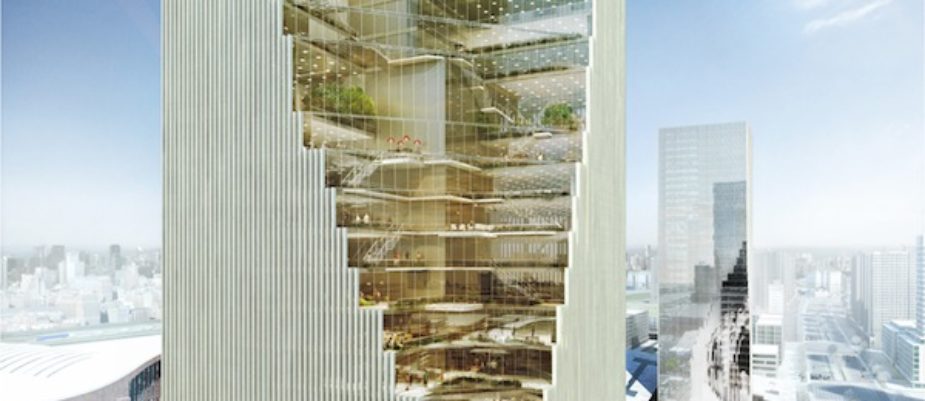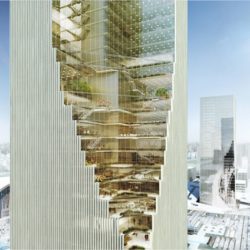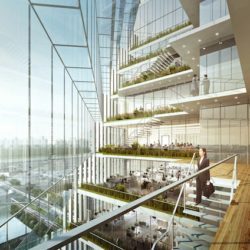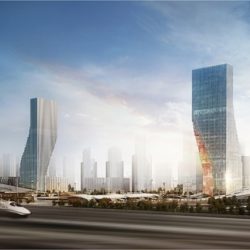
The iconic project by Spatial Practice includes office spaces, residential apartments, retail spaces and a hyper link to a new underground infra-structural hub. The Harbin Twin Towers project creates a specific balanced dialogue with the site and a new typology of indoor spaces that promotes human interactions.
China has the world longest High Speed Rail (HSR) network. In the city of Harbin, the new West Train Station will become the northern China gateway connecting to China’s major cities with daily high-speed links.
The Towers designed by Spatial Practice take full advantage of sitting on a transportation hub. Distances are shortening, fostering faster business transactions and promoting communication.
Sharing the same DNA – but positioned differently – the Twin Towers form a new icon and creates a balanced relationship between empty and full, private and public. Each tower creates a program specific dialogue with the site, with the north SoHo and Service Apartment tower atrium opening toward the Plaza, and the south Office Tower atrium oriented toward the Business District.
In response to Harbin’s extreme climate conditions, interior multi functional green terraces are injected into the upper atrium spaces promoting a high quality and healthy working environment for the office tower, and creating comfortable and climate controlled recreational terraces for the luxury residences.
The integrated media facades frame and activate the adjacent plaza promoting communication and social interaction between travellers, commuters and residents. The suspended microclimate atriums create a new typology of indoor spaces that promotes human interactions.
Project Details
Location: Harbin, Haxi District, China
Program: Office, Residential, Retail, Parking and Landscape
Status: Design Proposal
Year: July, 2013
Client: Kaishengyuan Group
Architect: spatial practice
Partners in charge : Erik Amir, Dora Chi
Project Architect: Max Gerthel
Team: Calvin W. Liu, Cathal Peter Quinn, James Beadnall, Sarah GeXiaorui, Victor QuirosQuiros, Emily Wu
Local Architect: Harbin Institute of Technology
Structural Engineers: BuroHappold, Matthew Smith, Henry Li
Visualization: ADRI, German Glessner Group
Physical Model: Gereide Models Beijing



















